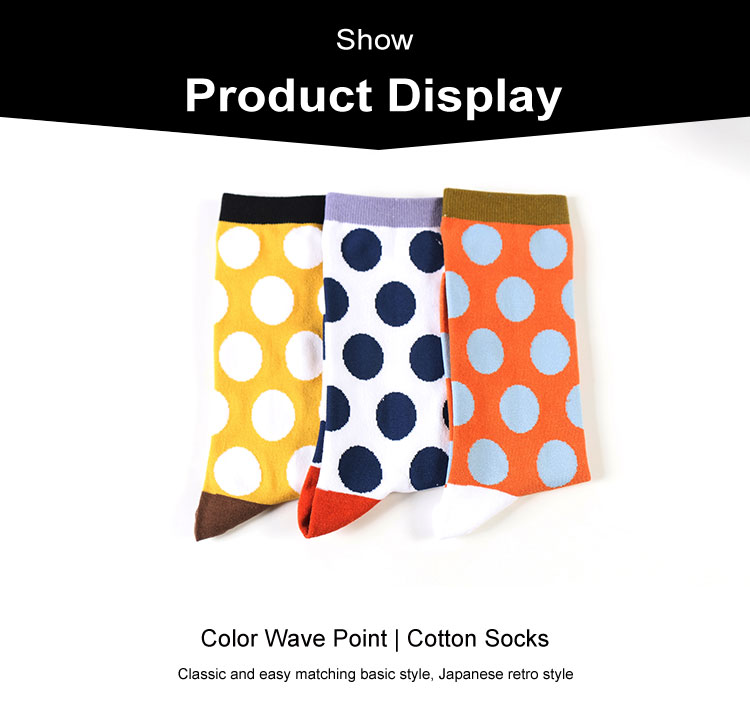

What socks do you wear in winter
When wearing socks in winter, first of all, socks should be kept dry, because a lot of moisture will squeeze out the air in the sock fiber after the socks are damped. Air is an excellent heat insulation body, which has more than 20 times the warmth retention of water. Therefore, once the socks are damped, they will not keep warm. Therefore, people who love sweating should wear both breathable and hygroscopic cotton socks or wool socks, and should not wear nylon socks with poor hygroscopicity and air permeability. For people with dry skin on feet, especially the elderly, they need to wear socks with poor moisture absorption. In comparison, the moisture absorption of wool socks is the best, followed by cotton socks. The moisture absorption of nylon socks is worse than that of cotton socks, while polypropylene socks are hardly hygroscopic.
When selecting socks, attention should be paid to distinguish. The handle of artificial fiber will be relatively smooth, while the quality of cotton is relatively rough; when you open the socks to observe the surface, there are no small brown spots or less, which is combed cotton. In general, acrylic fiber will be added to cotton socks to increase the elasticity of socks. Socks with more cotton and less acrylic fiber will feel soft, hygroscopic and more comfortable to wear.
What socks are the most warm in winter
We all know that wool is the most suitable for keeping out the cold. Woolen sweaters and quilts are indispensable for keeping warm at home in winter. Are socks and wool the best? The answer is No. although wool has good heat retention performance, its sweat absorption effect is not good. It is not only easy to breed bacteria, but also may cause blisters. Feet like the dry and warm environment, so, warm and sweat absorbing cotton texture, has always been the best choice for socks. Especially combed cotton with longer fiber and less impurities has better thermal insulation than general cotton. When selecting socks, attention should be paid to distinguish. The handle of artificial fiber will be relatively smooth, while the quality of cotton is relatively rough; when you open the socks to observe the surface, there are no small brown spots or less, which is combed cotton. In general, acrylic fiber will be added to cotton socks to increase the elasticity of socks. Socks with more cotton and less acrylic fiber will feel soft, hygroscopic and more comfortable to wear.
What thick socks are suitable for winter
"It's better to freeze your head and cover your feet than to take medicine." these proverbs are very reasonable. As the temperature gradually drops, some loose, warm cotton socks need to be ready. Many people think that the thicker the socks, the better the effect of keeping warm. However, if the socks are thick but do not absorb sweat, it is easy to get wet. A large amount of water will squeeze out the air in the sock fiber. Due to the lack of air, which is an excellent heat insulation body, when the socks are wet, they will make the soles of feet cool, and reflexively cause the decline of respiratory resistance and catch a cold.
Winter indoor temperature is high, if the shoes and socks are too thick and tight, it is easy to sweat. If the foot sweat is not released in time, it will be absorbed by the shoes and socks, which will not only breed bacteria and lead to beriberi. In low temperature outdoor, the feet will feel colder when the moisture inside the shoes is cold. In addition, it also affects the blood circulation of the feet. On the market, we can often see the words "80D" and "110D" on the packaging of velvet socks. Experienced people say that the higher the d number, the thicker the socks. Indeed, D refers to denier, which is the unit of fiber size. The higher the d number is, the higher the relative weight of the fiber is, and the thickness will naturally increase. Generally speaking, more than 60d for autumn and winter socks.
Pay attention to some rules when buying socks
Socks should fit well:
The top and tube of socks should be tight, the bottom should be loose, the heel should be big, the surface of socks should be smooth, the rib should be flat without skew, the needle pattern should be clear, and the pattern, sock head and heel should be free of exposed needles. When wearing, the feet are tight, itchy, obvious stretch marks and other discomfort, indicating that the socks are not suitable.
Pay attention to fiber density:
Too loose had better not buy, extra fiber will aggravate friction, damage foot skin. A pair of socks with a few yuan on the street looks good, but in terms of fiber density, it is inevitable that they do not meet the standard.
Don't be too fancy:
The color of socks should be consistent with the inside of shoes as far as possible to avoid dyeing with shoes. Socks should be preferred to light color, the more bright the color, the more chemical components added inside.
Change it after wearing it for a long time:
Socks wear for a long time will become thin, even holes, will lead to heel injury or blistering. Even if they are not worn out, the socks will lose their elasticity after wearing for a long time, increase the friction with the feet, and the feet will feel greasy when they are sweating, which can easily lead to injury.
/
